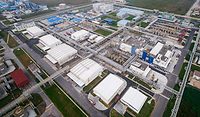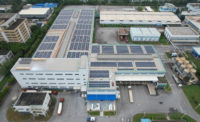AkzoNobel Expands Renewable Energy Use Across China Facilities
Image courtesy of AkzoNobel.
AkzoNobel is accelerating its transition to clean energy in China, with more than half of its 15 production sites progressing toward 100% renewable electricity. The initiative aligns with the company’s goal to fully transition its global operations to renewable electricity by 2030.
A major project underway involves solar installations and external renewable sourcing at eight Chinese facilities. The Suzhou and Changzhou sites are set to achieve 100% renewable electricity this year, while Shanghai and Wuhan aim for 90% by 2026. Langfang facilities have already reached 100% renewable electricity, and the Guangzhou site is currently at 20%, with plans to double soon.
“We’re fully focused on achieving our ambition of 100% renewable electricity in our own operations by 2030,” said Wijnand Bruinsma, director of sustainability at AkzoNobel.
The company has installed over 5,600 solar panels across its Shanghai, Guangzhou, and Chengdu sites as part of a second-phase energy transition project. As of February 2025, six AkzoNobel sites in China have received government-certified "green factory" status, with three recognized at the national level.
Beyond China, AkzoNobel already operates on 100% renewable electricity in North America, Latin America, and Europe. The company also installed its largest European solar energy plant in Pilawa, Poland, in 2024, featuring 3,551 solar panels with a 1.9 MWp capacity.
For more details, visit the company’s 2024 annual report.
Looking for a reprint of this article?
From high-res PDFs to custom plaques, order your copy today!








